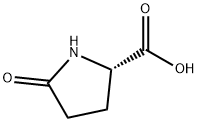DL-Leucine
Synonym(s):(±)-Amino-4-methylpentanoic acid;DL-2-Aminmo-4-methylvalerianic acid, DL-2-Aminmo-4-methylpentanoic acid;DL-Leucine
- CAS NO.:328-39-2
- Empirical Formula: C6H13NO2
- Molecular Weight: 131.17
- MDL number: MFCD00063087
- EINECS: 206-328-2
- SAFETY DATA SHEET (SDS)
- Update Date: 2025-12-26 16:58:18

What is DL-Leucine?
Chemical properties
White crystalline powder
The Uses of DL-Leucine
DL-Leucine is a racemic mixture of the D- and L- enantiomers of Leucine. DL-Leucine is used to form benzimidazole and pyrimidine hydroxy azo dyes with various transition metals. DL-Leucine may be used for the evaluation of chiral amino acid separation techniques.
DL-Leucine is used for the following applications:
- Used as a standard for the measurement of free amino acids
- Used in the process of tritiated leucine uptake
- Used in solution preparation (various organics were used in different combinations and concentrations to model complex surface tension effects, DL-Leucine is one of them). It is chosen due to its presence in atmospheric aerosols and ice nucleation activity as well as for its surfactant character
Definition
ChEBI: A branched-chain amino acid that consists of glycine in which one of the hydrogens attached to the alpha-carbon is substituted by an isobutyl group.
Properties of DL-Leucine
| Melting point: | 293-296 °C (subl.) (lit.) |
| Boiling point: | 225.8±23.0 °C(Predicted) |
| alpha | [α]D20 -3.0~+3.0゜ (c=4, HCl) |
| Density | 1,293 g/cm3 |
| refractive index | 1.4630 (estimate) |
| storage temp. | Keep in dark place,Inert atmosphere,Room temperature |
| solubility | 1 M HCl: soluble |
| form | Fine Crystalline Powder |
| pka | pKa: 9.744(25°C) |
| color | White |
| Odor | wh. sm. cryst. or cryst. powd., odorless, sl. bitter taste |
| Water Solubility | soluble |
| Merck | 14,5451 |
| BRN | 636005 |
| Stability: | Stable. Incompatible with strong oxidizing agents. |
| CAS DataBase Reference | 328-39-2(CAS DataBase Reference) |
| NIST Chemistry Reference | DL-Leucine(328-39-2) |
| EPA Substance Registry System | Leucine (328-39-2) |
Safety information for DL-Leucine
| Signal word | Warning |
| Pictogram(s) |
 Exclamation Mark Irritant GHS07 |
| GHS Hazard Statements |
H315:Skin corrosion/irritation H319:Serious eye damage/eye irritation H335:Specific target organ toxicity, single exposure;Respiratory tract irritation |
| Precautionary Statement Codes |
P261:Avoid breathing dust/fume/gas/mist/vapours/spray. P305+P351+P338:IF IN EYES: Rinse cautiously with water for several minutes. Remove contact lenses, if present and easy to do. Continuerinsing. |
Computed Descriptors for DL-Leucine
New Products
4,4-Difluoropiperidine hydrochloride tert-butyl 9-methoxy-3-azaspiro[5.5]undecane-3-carboxylate Indole Methyl Resin N-Isopropylurea N,N-Dicyclohexylcarbodiimide(DCC) MELDRUMS ACID 5-METHYLISOXAZOLE-4-CARBOXYLIC ACID Magnessium Bis glycinate Zinc ascorbate 1-bromo-2-butyne 2-acetamidophenol 9(10H)-anthracenone Erythrosin B, 4-Piperidinopiperidine 2-((4-morpholinophenylamino) (methylthio) methylene) malononitrile 2,4-dihydroxybenzaldehyde 3-(4-morpholinophenylamino)-5-amino-1H-pyrazole-4-carbonitrile Methyl 2-methylquinoline-6-carboxylate 2,6-dichloro-4-nitropyridine 4-Bromo-2-chlorobenzonitrile 2-(benzylamino)acetic acid hydrochloride 4-(tert-Butoxycarbonylamino)but- 2-ynoic acid 3,4-dihydro-2H-benzo[b][1,4]dioxepine 1-Phenyl-1-cycloprppanecarboxylicacidRelated products of tetrahydrofuran








You may like
-
 328-39-2 DL-Leucine 98%View Details
328-39-2 DL-Leucine 98%View Details
328-39-2 -
 Dl-leucine 98% CAS 328-39-2View Details
Dl-leucine 98% CAS 328-39-2View Details
328-39-2 -
 DL-Leucine CAS 328-39-2View Details
DL-Leucine CAS 328-39-2View Details
328-39-2 -
 DL-Leucine CAS 328-39-2View Details
DL-Leucine CAS 328-39-2View Details
328-39-2 -
 DL-Leucine CAS 328-39-2View Details
DL-Leucine CAS 328-39-2View Details
328-39-2 -
 CAS 328-39-2 DL-LeucineView Details
CAS 328-39-2 DL-LeucineView Details
328-39-2 -
 20677-73-0 (2,2-diethoxyethyl)methylamine 98%View Details
20677-73-0 (2,2-diethoxyethyl)methylamine 98%View Details
20677-73-0 -
 3-(4-(hydroxyamino)-1-oxoisoindolin-2-yl)piperidine-2,6-dione 98%View Details
3-(4-(hydroxyamino)-1-oxoisoindolin-2-yl)piperidine-2,6-dione 98%View Details
Statement: All products displayed on this website are only used for non medical purposes such as industrial applications or scientific research, and cannot be used for clinical diagnosis or treatment of humans or animals. They are not medicinal or edible.
